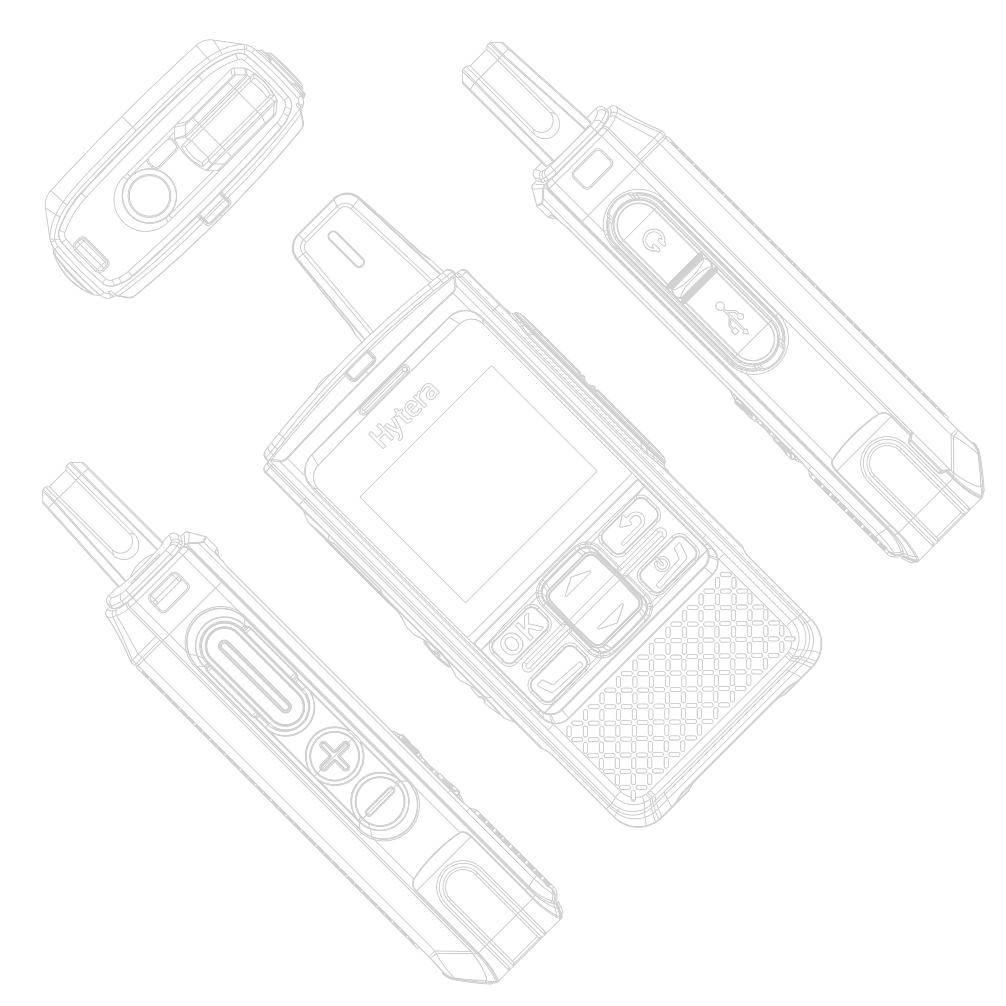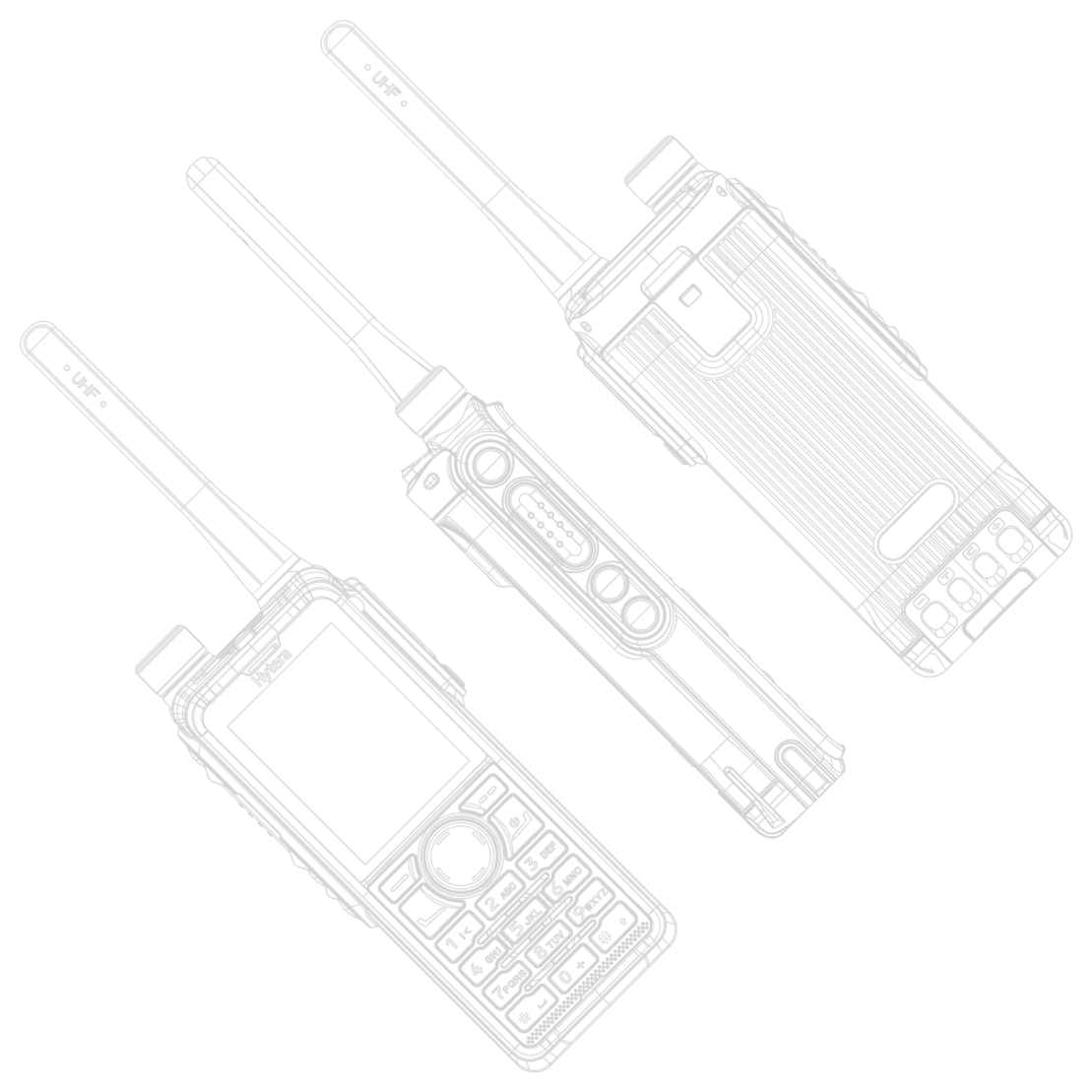Frequently Asked Questions
General Radio
GENERAL
What is Encryption?
Encryption provides secure transmission so radios in the vicinity cannot listen in on conversations. There are several different types of encryption. Some are simple types that offer basic protection from conversations being overheard. Others offer a higher level of protection and are not easily unscrambled by scanners or other surveillance devices. The common forms are:
DMR digital radio now offer digital encryption. The DMR standard includes encryption features that are compatible between manufacturers.
DMR radio manufacturers also offer higher level AES and DES 64,128 and 256 bit digital encryption.
What are Call Groups or Talk Groups?
With digital radios, Channels are also called Call Groups (or Talk Groups). Group Calls are pre-programmed groups of radio users that can be called simultaneously with the press of a button and enables instant group calls to multiple users from a dispatching application. Most operations use several call groups that are set up based on broadcast emergency calls, mobile users, locations, or job team types like security, maintenance, and management. Users can also belong to multiple talk groups. Considering and planning how to organize call groups is an important part of for the successful implementation of a radios system that fully leverages the group calling capabilities to streamline communications and enable operational efficiencies.
What are Channels?
Channels are used to send the actual communications. For DMR radios, each channel is tied to a particular frequency, and DMR frequencies are spaced at 12.5 KHz. That allows two radios to support have 256, 512, or 1,024 channels. For Push-to-Talk over Cellular radios, there are unlimited channels. Channels are used to separate work groups within your organization. This way each work group can have their own channel to reduce disruptions to other departments. Digital radios provide the added benefit of allowing each worker to have an individual channel as well as a channel for their work group.
We have a high noise environment. Do you have equipment for that?
Yes, two-way radios can both transmit and receive clear audio in high noise environments. Hytera radios feature AI-based digital noise cancellation that removes background noise from voice conversations in real time for users at noisy manufacturing floors, construction sites, concert venues, and areas with noisy traffic. Learn more about digital noise cancellation.
What Are the Benefits of Two Way Radios Over Cell Phones?
Some of the many benefits radios provide over cell phones include: radios are less expensive, more durable, have better audio quality, longer battery life, and support instant push to talk and group calling. Learn more about the differences between radios and cell phones.
How many years does a battery last?
Hytera Lithium-Ion and Lithium polymer batteries typically support around two years of charging cycles (the number of times the batteries can be drained and charged). These batteries should be replaced every two to three years.
What is a 5/5/90 Battery Duty Cycle
Handheld radio battery life is calculated based on the 5/5/90 duty cycle of 5% of the time the radio is transmitting calls, 5% of the time the radio is receiving calls, and 90% of the time the radio is on but idle. Note that some calculations are based on a 10/10/80 duty cycle.
What is the typical battery life for Hytera PoC radios?
It depends on the type of battery, but most Hytera handheld radios feature the latest generation of Lithium Polymer batteries that provide over 24 hours with a 5/5/90 duty cycle.
DMR Radio
What is VOX?
VOX is voice activation that enables hands free operation by simply speaking and the radio will open and broadcast your message.
Do stubby antennas work as well as the regular length two-way radio antennas?
A stubby antenna has the same length antenna wire as a regular length antenna however the actual antenna is coiled around a mast in order to produce a stubby or shorter profile antenna. In theory they can provide the same coverage as a longer “whip” antenna, but the longer antennas typically provide longer range than a stubby or low-profile antenna.
What is Scanning
Scan, or scanning, is a radio feature that instructs the radio to look for a channel that is active. Scanning only works on channels that have been pre-programmed into the radio. Do not confuse a scanner radio that looks for activity on any frequency verse scanning on a commercial 2 way radio that looks only for pre-programmed frequencies.
Is VHF or UHF better?
VHF (very high frequency) or UHF (ultra-high frequency) refers to the frequency range a radio operates within. VHF is 136 – 174 MHz while UHF is 400 – 512 MHz. The higher the frequency the shorter the wavelength. The longer the wavelength the further a signal can travel. The shorter the wavelength the easier it is for the signal to penetrate. In the real world, VHF is superior for broadcasting over open areas or one unobstructed position to another. UHF is superior for broadcasting around and through building or other obstacles.
When deciding on VHF or UHF, it depends on several factors.
If you are indoors or somewhere with a lot of obstructions, use UHF.
These would be places like school buildings, hotels, hospitals, construction sites, retail, warehouses, or a college campus. These areas have lots of buildings, walls, and other obstructions where UHF is better equipped to handle.
If you are in areas free of obstruction you should use VHF. These would be road construction, farming, agriculture, ranch work, etc.
Do I have to buy digital DMR radios or can I still get analog radios? Will new radios work with my existing equipment?
You can still get analog radios, but digital radios are recommended because they provide better performance with clearer audio, longer battery life, and farther range. The price differential is not that significant and since digital radios can always operate in analog mode, you can buy digital and start migrating without replacing everything at once. New equipment can always be programmed to work with existing equipment.
What does Intrinsically Safe mean?
Intrinsic safety (IS) is a technology for safe operation of electronic equipment in locations where explosive gases and dust may be present. Intrinsically safe radios are designed so the electrical energy in the radio is low enough that ignition of the explosive gases will not occur. Manufacturers must meet specific standards in order for a product to be certified as ‘Intrinsically Safe’. Radios meeting this standard have the designation ‘Intrinsically Safe’ or UL913 certified on their documentation.
What is digital trunking? How does this help my business?
A trunked radio system expands the capacity of radio repeaters by enabling radio channels to be shared by multiple user groups. For instance, you may have four different groups that need to radio communications. Trunking gives those groups the ability to share channels but still be separate in operations; they won’t hear each other’s transmissions as they are separate groups. How does it help your business? Sharing channels (automatically using an open channel) reduces infrastructure costs. If you have ten Groups, this can easily be handled by a four or five channel trunked system instead of buying ten repeaters (channels). Learn more about DMR trunking.
Do I need an FCC license?
Yes is the short answer. In the grand scheme of things, the cost to license is relatively inexpensive and lasts for 10 years. It is of benefit to do so. Not only are you legally obligated to obtain a license for most two-way radio applications, it helps to protect you from potential interference by coordinating your operations with those that surround you. If you have a small business and only a few users located in close proximity, you may be able to use OBR (Onsite Business Radios) that have short range, limited group calling, and do not require FCC Licenses.
PoC Radio
Can you interface or bridge a PoC radio into an existing (DMR/analog) system?
Yes, you can interface an existing Tier 2, Tier 3, or XPT System with the Hytera MPUC 2-way Wireless Gateway or through the HyTalk Connect System.
How does the real-time GPS location tracking work on a PoC radio?
The PoC radio must have the GPS feature enabled for tracking to occur. The tracking uses the global satellite network to fix the location of the radio receiver. That information is then sent to the Hytera HyTalk Dispatch application for visual display on the map. Learn more about GPS.
If using a PoC mobile radio, will I need to manually switch from Wi-Fi to 4G/LTE when I go out of range of my Wi-Fi network?
No, the Hytera PoC radio will seamlessly rollover over from Wi-Fi coverage to Cellular coverage and back again with no manual intervention.
How is a PoC radio similar or different than a DMR radio?
PoC radios support the advanced features of Digital Mobile Radios (DMR), including messaging, instant group calling, GPS location tracking, and emergency notifications. Combining this functionality with LTE cellular networks provides the bandwidth required for modern data, photo, and video applications, along with nationwide LTE coverage.
How do PoC devices connect to cellular networks?
PoC devices connect to a nationwide cellular 4G/LTE network (T-Mobile or A&T for example) using SIM cards like those used in cell phones to access the mobile operator’s cellular network with an Access Point Name (APN) that routes the data traffic to the mobile operator’s internet gateway.
Do you need to install repeaters and secure FCC frequencies for a PoC system?
Push to Talk over Cellular uses existing Wi-Fi networks or the subscription-based HyTalk Nationwide, so there is no need to purchase, operate, and maintain any radio infrastructure. This reduces costs and enables rapid deployments. PTT over Wi-Fi, like PoC systems, also eliminates the need for expensive radio frequency licenses, and in many high-density urban areas, there may be no frequency spectrum available.
What is the range of a PoC (Push-to-Talk over Cellular) radio?
PoC radios can work over Wi-Fi and/or the 4G/LTE network. For Wi-Fi, the range is the reach of the Wi-Fi network on a site/campus or more than one site if using a VPN. Wi-Fi coverage is also dependent on the environmental conditions, e.g., walls, nearness to a router or access point. A Wi-Fi site assessment is strongly recommended. For 4G/LTE (cellular) coverage, once a SIM is installed, the range of the radio is nationwide and varies depending on a given carrier’s US coverage. Learn more about PoC


